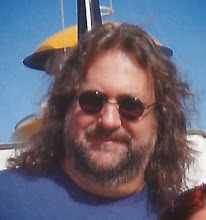 Batman #219
Batman #219 (On Sale: December 4, 1969) has a nice cover by
Neal Adams. This is the last issue to use this long-time logo.
We begin with our cover-story,
"Death Casts the Deciding Vote" by
Frank Robbins, Irv Novick and
Dick Giordano. Bruce Wayne heads to the state capitol to find public funding for his Victims Inc, Program but when he reaches the governor's office he finds Senator Lincoln Webster already there. Webster is visiting on the sly and informs Bruce that a new anti-crime bill he is sponsoring will put V.I.P. out of business, but that there might be a federal "Health and Welfare" bill that some of Bruce's ideas might be tacked on to.
Webster invites Bruce to fly with him back to Washington, DC where he needs to be tomorrow to vote on his bill and promises to introduce Bruce tot he right people. Little do they know that they are being watched and followed as they leave the state house. They take a commuter flight back to DC but things go bad almost immediately.
Unbeknownst to Bruce and Webster, the plane has been hijacked. Bruce notices that the plane is flying in the wrong direction and breaks into the cockpit to see what is going on. There he is knocked out and hijackers tell the passengers that Bruce was a hijacker and that they are the FBI. Webster knows something is up, but does not want to reveal his identity. They put Bruce in a back room where he escapes and returns to the front of the plane as Batman. They threaten to kill Webster if Batman doesn't stop and he is also captured and thrown in with Bruce Wayne (Bruce used inflated Mae Wests to fill out his clothing when he changed into Batman garb).
The hijackers land the plane at an abandoned airfield. There they reveal that they are simply holding Webster until after the vote of his bill, so that it will fail. When they go to check on Batman, they find an unconscious Bruce Wayne and an open door where they assume Batman has escaped. They move Bruce back up with the passengers and he talks the Senator into faking a heart attack. Bruce convinces the hijackers to fly to a nearby medic. When they take off, batman pops up in the cockpit. The gunmen freak out and run back into the passenger area where Bruce gets the better of them. He then rushes to the cockpit where he deflates the Batman suit he had rigged with the wheels hydraulic mechanism and tells the pilots to head for DC.
As they approach DC for landing the wheels open and suck the Batman suit out of the plane, which is sort of what you see on the slightly misleading cover. Not a great story by any means, but also not what this issue is known for.
The back-up story is
"The Silent Night of the Batman" by
Mike Friedrich, Neal Adams and
Dick Giordano. This is a beautifully done Christmas tale of a Christmas Eve which Batman spends singing Christmas carols with Commissioner Gordon and his men, while out across Gotham the spirit of Batman stops one crime after another. Sometimes it is a Batman toy, sometimes a blind man in a Batman costume, sometimes the shadow of a suspension bridge forming a Batman symbol.
This is Neal's first Batman story outside of the
Brave and the Bold. During a trip to San Francisco about 10 years ago I visited the
Museum of Cartoon Art and they had the original art to
"The Silent Night of Batman" on display, a gift from
Mike Friedrich. The originals are stunning.
It is a classic tale like no other and has been reprinted in
Limited Collectors' Edition C-43, Christmas with the Super-Heroes #1 and
Batman Illustrated by Neal Adams Vol. 2 HC.

One more back-up before we go and that is
"Time to Kill" by
Henry Kuttner and
John Giunta and reprinted from
Phantom Stranger #5. This is a great little story about a rivalry between two scientists, a time machine and a murder that becomes a suicide.
Henry Kuttner was a client of
Julius Schwartz's, a science-fiction writer who only wrote 21 stories for DC comics. Twenty of them were written between 1944 and 1946 and all twenty were
Green Lantern stories. This, his 21st and last story was written in 1953. Besides his work for DC, Kuttner also wrote for Fawcett, Ace and Avon Comics and worked for a while out of the Chesler Studio.
Kuttner was married to Catherine Louise Moore, also a writer and they co-authored a number of science-fiction novels together. Kuttner is the creator of
Elak of Atlantis, an early sword and sorcery character. Ten of Kuttner's novels were published after his death in 1958.
The Best of Henry Kuttner was published in 1987 and
Catherine Lucille Moore and Henry Kuttner: A Marriage of Souls and Talent: A Working Bibliography was published in 1986.
Kuttner wrote under a number of pseudonyms including
Lewis Padgett. One of his stories (co-written with his wife) was
Mimsy Were the Borogoves which was adapted into the feature-length film
The Last Mimzy.
Edited by
Julius Schwartz.
 Superman's Girl Friend Lois Lane #99 (On Sale: December 23, 1969) has a cover by Curt Swan and Murphy Anderson.
Superman's Girl Friend Lois Lane #99 (On Sale: December 23, 1969) has a cover by Curt Swan and Murphy Anderson.

































